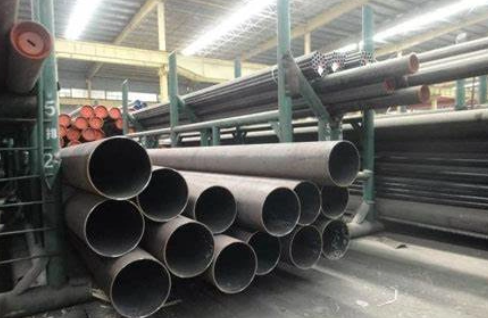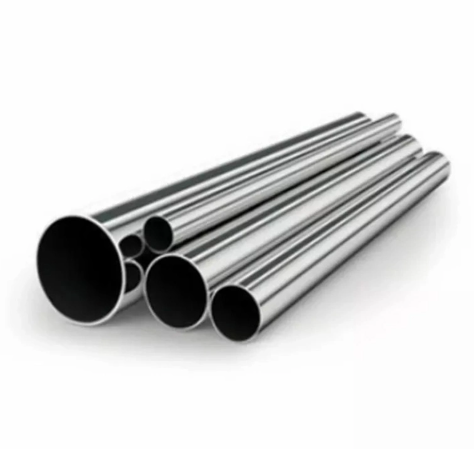Views: 0 Author: Site Editor Publish Time: 2025-09-12 Origin: Site








Ever wondered what makes steel strong and versatile? From skyscrapers and bridges to kitchen tools and cars, steel is the backbone of modern life. But steel isn’t just one material—it comes in different types, each designed for specific uses.
In this guide, we’ll explore the four main types of steel: carbon steel, stainless steel, alloy steel, and tool steel. You’ll learn what makes each type unique, where it’s used, and why it matters in everyday life. Whether you’re a student, an engineer, or simply curious, this article will give you a clear understanding of the steel that shapes our world.
Carbon steel is a type of steel that mainly consists of iron and carbon. It’s known for its strength and durability. The amount of carbon in the steel can vary, which changes its properties. This makes carbon steel suitable for many different uses.
Carbon steel is divided into three main categories based on the amount of carbon it contains.
Low carbon steel has less than 0.3% carbon. It’s easy to work with and can be bent and shaped without breaking. This type of steel is used to make wires, bolts, and pipes. It’s also the most affordable option.
Characteristics: Elastic, easy to weld, low cost.
Common Uses: Wires, bolts, pipes, general hardware.
Example: A wire fence made from low carbon steel can stretch without breaking, making it perfect for construction sites.
Medium carbon steel has between 0.31% and 0.6% carbon. It’s stronger than low carbon steel but less flexible. You’ll find it in gears and railroad tracks. It can handle more weight and pressure.
Characteristics: Higher strength, lower ductility.
Common Uses: Gears, railroad tracks, mechanical parts.
Example: Railroad tracks made from medium carbon steel can withstand the heavy weight of trains without bending.
High carbon steel has more than 0.61% carbon. It’s the strongest and toughest type of carbon steel. It’s used for making cutting tools and nails. It’s great for applications where you need a sharp edge or high strength.
Characteristics: Very strong, brittle, difficult to weld.
Common Uses: Cutting tools, nails, springs.
Example: A high carbon steel knife blade stays sharp for a long time, making it ideal for kitchen use.

Stainless steel is known for its shiny, rust-resistant surface. It’s made by adding chromium to steel, which helps it resist corrosion. This makes it perfect for environments where cleanliness and durability are important.
Stainless steel is divided into four main types based on its structure and properties.
Austenitic stainless steel is the most common type. It has a lot of chromium and nickel, making it highly resistant to rust. It’s non-magnetic and easy to clean. You’ll find it in kitchen appliances and food processing equipment.
Characteristics: High corrosion resistance, non-magnetic, easy to clean.
Common Uses: Kitchen appliances, food processing equipment, architectural features.
Example: A stainless steel refrigerator in your kitchen stays shiny and rust-free, making it easy to keep clean.
Ferritic stainless steel has less chromium and nickel. It’s magnetic and less expensive than austenitic stainless steel. It’s used in automotive parts and industrial equipment.
Characteristics: Magnetic, lower cost, good corrosion resistance.
Common Uses: Automotive parts, industrial equipment.
Example: Car exhaust pipes made from ferritic stainless steel resist rust and are cost-effective.
Martensitic stainless steel is the hardest type. It has a lot of carbon and is very strong. It’s magnetic and used for making knives and surgical instruments.
Characteristics: High hardness, magnetic, less corrosion resistance.
Common Uses: Knives, surgical instruments, cutting tools.
Example: A surgeon’s scalpel made from martensitic stainless steel stays sharp and strong during delicate operations.
Duplex stainless steel is a mix of austenitic and ferritic alloys. It combines the best of both worlds—high strength and good corrosion resistance. It’s used in marine environments and the oil and gas industry.
Characteristics: High strength, corrosion resistance, magnetic.
Common Uses: Marine equipment, oil and gas pipelines.
Example: Offshore oil rigs use duplex stainless steel pipes to withstand harsh saltwater conditions.
Alloy steel is made by combining iron with other elements like nickel, cobalt, or chromium. This creates steel with special properties that can be tailored for specific uses.
Alloy steel is divided into three main categories based on the amount of other elements it contains.
Low-alloy steel has between 1.8% and 6% other elements. It’s a good balance of strength and cost. It’s used in pipelines and structural beams.
Characteristics: Moderate strength, cost-effective.
Common Uses: Pipelines, structural beams.
Example: Oil pipelines made from low-alloy steel can handle high pressure without breaking.
Medium-alloy steel has between 5% and 12% other elements. It’s stronger and more durable. It’s used in automotive parts and machinery.
Characteristics: High strength, wear resistance.
Common Uses: Automotive parts, machinery.
Example: Car axles made from medium-alloy steel can handle the stress of driving without wearing out quickly.
High-alloy steel has more than 12% other elements. It’s the strongest and most durable type of alloy steel. It’s used in the oil and gas industry and for making pots and pans.
Characteristics: Superior strength, high corrosion resistance.
Common Uses: Oil and gas pipelines, kitchenware.
Example: High-alloy steel pots and pans resist rust and last a long time in the kitchen.

Tool steel is designed to make tools that need to be really hard and strong. It’s made by adding elements like tungsten, chromium, and vanadium to carbon steel.
Tool steel is divided into several types based on how it’s cooled and what elements it contains.
Air-hardening steel is cooled slowly in the air. It’s hard and wear-resistant. It’s used for making precision tools like drills.
Characteristics: Hard, wear-resistant, minimal distortion.
Common Uses: Precision tools, drills.
Example: A drill bit made from air-hardening steel stays sharp and doesn’t warp when used.
Oil-hardening steel is cooled in oil. It’s even harder and more wear-resistant. It’s used for making knives and shears.
Characteristics: High hardness, good wear resistance.
Common Uses: Knives, shears.
Example: Kitchen knives made from oil-hardening steel stay sharp and resist wear.
Water-hardening steel is cooled quickly in water. It’s super hard but a bit brittle. It’s used for making general-purpose tools.
Characteristics: Very hard, brittle, low cost.
Common Uses: General-purpose tools.
Example: A water-hardening steel hammer is strong but can break if dropped.
High-speed steel can stay sharp and strong even at high temperatures. It’s used for making drill bits and power saws.
Characteristics: High abrasion resistance, heat resistance.
Common Uses: Drill bits, power saws.
Example: A high-speed steel drill bit can cut through metal without losing its edge.
Hot-working steel can handle extreme heat. It’s used for forging and casting.
Characteristics: High-temperature strength, toughness.
Common Uses: Forging, casting.
Example: Hot-working steel molds can withstand the heat of molten metal during casting.
Shock-resisting steel can handle impacts. It’s used for making punches and riveting tools.
Characteristics: Impact-resistant, shock-absorbent.
Common Uses: Punches, riveting tools.
Example: A shock-resisting steel punch can withstand repeated impacts without breaking.
We’ve explored the four main types of steel and seen how each one has its own unique properties and uses. From the durable carbon steel that builds our structures to the rust-resistant stainless steel in our kitchens, from the versatile alloy steel in our vehicles to the tough tool steel in our workshops, steel is a material that truly stands the test of time. Understanding these different types of steel helps us appreciate the engineering and science behind the everyday objects we rely on. Whether you’re designing a new building, cooking in the kitchen, or working on a project in the garage, knowing the right type of steel for the job can make all the difference.
At Zhongrun Steel (Foshan) Co., Ltd., we specialize in providing high-quality steel products tailored to meet the diverse needs of our customers. Our commitment to excellence and innovation ensures that you get the right steel for your project, every time. From construction to manufacturing, we’ve got you covered. Steel isn’t just a material—it’s a testament to human ingenuity and the drive to create stronger, more durable, and more versatile materials. As we continue to innovate and discover new ways to combine elements, the future of steel looks even brighter. Thanks for joining us on this journey through the world of steel, and remember, for all your steel needs, Zhongrun Steel (Foshan) Co., Ltd. is here to help!